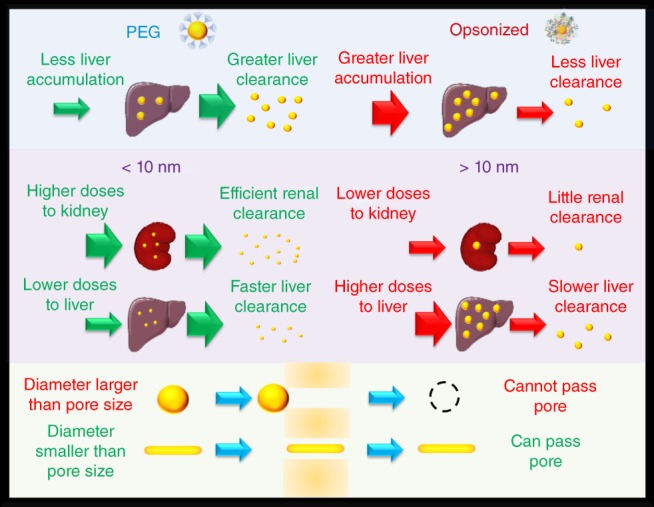Figure 5.

Particles having coatings that resist nonspecific binding like PEG not only have less accumulation within the liver, but the particles that do accumulate have quicker clearance from the organ when compared to opsonized particles. Particles that are less than 10 nm in size tend to have greater amounts of the injected dose go through efficient renal clearance and less accumulate within the liver. Moreover, the particles that do accumulate in the liver have quicker clearance rates than larger‐sized particles. Therefore, smaller particles tend to have a greater clearance rate overall from the body than larger‐sized counterparts. Particles that are greater than 10 nm in size have little to no renal clearance and rely heavily on hepatobiliary clearance, which is a significantly slower process. Rod‐shaped particles offer the ability to clear the renal system despite having a length greater than the glomerular pore size. Even with lengths significantly larger than the pore size, as long as the diameter of the rod is smaller than the pore there is a possibility for clearance. Spherical‐shaped particles having diameters larger than the pore size are excluded from passing. Rod‐shaped particles that are able to clear the renal system offer an opportunity to load more imaging or therapeutic agents as they have greater volumes and surface areas than would spheres that can pass through similar pore sizes
